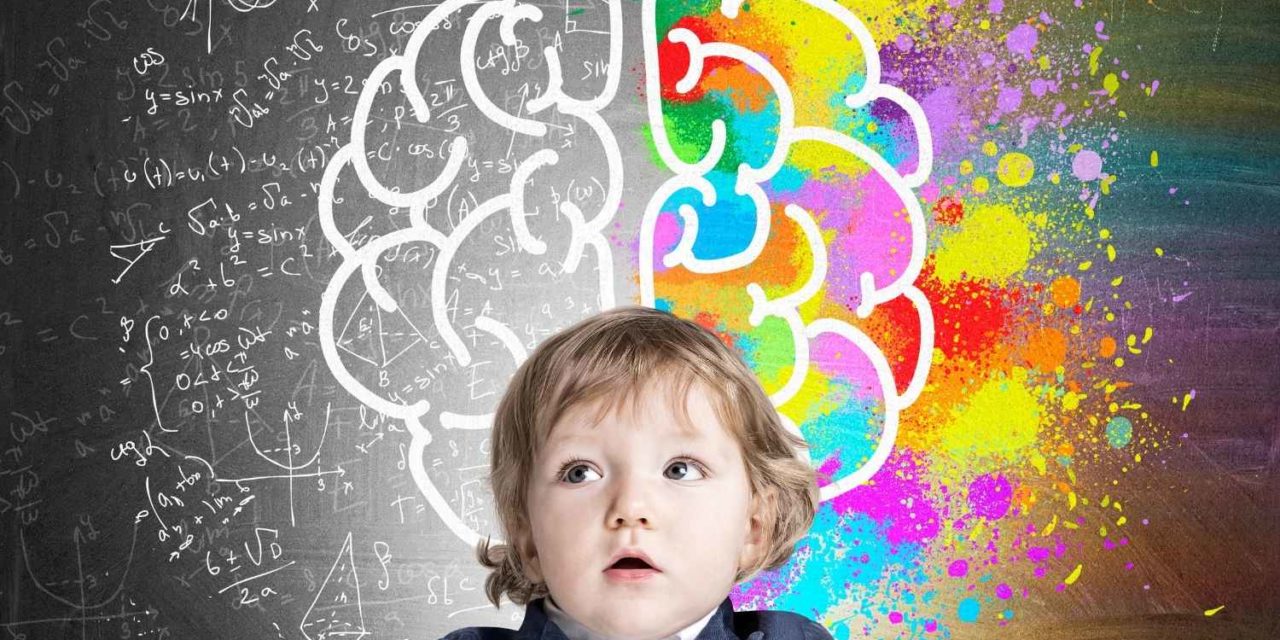Raising a child is an adventure, and parents want to know the best way to approach it. Child Development is a process that is not the same for everyone, but certain fundamental principles apply to children of all ages. A parent’s perception of how their child grows is crucial because it helps them understand that growth. There are ups, downs, twists, and turns – but you must stay focused while making your way through the course.
You might think your life is ordinary, but you’re in a race if you are a parent. Go ahead, admit it. According to the experts, you’re in a race against the five stages of child development. Yes, life consists of five distinct phases, and it’s your job as parents to guide your little ones through them all! The only problem is, can we teach our toddler long division? Is there a way to tell my elementary schooler about compound interest? Above all, child development is one of the most crucial topics a parent can learn, mainly due to its endless variations.
However, despite how small they may seem, children develop at various rates, and it’s essential to take note of those stages early on. So, if you want to understand more about child development – read this article!
From conception to early adulthood, children transform in many ways every day. The first stage of child development starts when a child is conceived and ends with birth. The second stage is more intriguing because it ends when the child walks. The third phase is when they start to talk. The fourth stage describes cognitive and emotional changes, while the fifth one explains the beginning of puberty, ending with the “young adult” living on their own.
Here you’ll find what to expect from your child at each stage of development, along with advice on how to interact with them during that period. A friendly guide to the five stages of child development will help you teach and nurture your child better.
Why is Child Development divided into five stages?

Child development doesn’t happen overnight. The child learns critical skills that define them into adulthood through these stages.
It’s essential to make sure that you check in on your child’s progress through each stage so that you can help your child improve their development in decision-making, problem-solving, and social skills. Children often spend too much time playing with technology, affecting their language development and ability to play with other children. As a parent, for you, there has never been a better time to stay involved in your child’s growth.
The five stages of development dictate the need to incorporate an all-rounded approach to raising your child. That means ensuring your child has adequate time to develop their speech, play with their peers, and improve their creativity and decision-making skills.
1. Newborn development:

The first stage of child development is all about the senses. By six months, your baby will be able to see, hear, and smell things. Eager to experience the world, babies are now longer than 8 inches and can see color. They’re working on developing their first motor skills and are ready to begin breastfeeding.
During the newborn stage, your child mainly learns by touching and seeing things in their environment. Have you ever wondered why your baby touches objects and even tries to put them in their mouth? This behavior is due to your child’s need to identify objects they are seeing. Your child can learn that some things are pleasant while others are unpleasant by tasting objects.
It is essential to form a strong bond with your child during this development period. This relationship will help your child grow up within a consistent and loving environment. During this stage, your child begins to focus on faces around them. They may babble and coo as you interact with them, and new reflexes like opening their mouths when their cheeks are stroked will become very familiar.
When a baby is born, they face a host of challenges. Physically, they’re not in their comfort zone—they’ve got to learn to handle their own body and adjust to all the new stimuli in the world around them. It’s a lot for a baby brain, even if it’s about the size of a zucchini.
But there’s another issue parents have to deal with—the lack of sleep. In addition to all that, all kinds of medical problems can arise during pregnancy and childbirth that your doctor won’t know how to fix until they happen. There are also issues surrounding breastfeeding or introducing solid foods, or handling your baby’s umbilical cord stump that they don’t cover in medical school. So you find yourself scrambling to figure out what you’re supposed to do when your baby is crying or vomiting or has projectile diarrhea because they ate something new.
2. Infancy:

Children take sudden leaps in their development from the first moments of their lives. Before they’re a year old, they learn how to control their head movements and clasp their hands. By nine months, they’re babbling words and picking up objects. Though parents have long thought that these early actions were just signs of a baby’s intelligence, researchers at Yale University found that infants as young as three months old mimic other people’s facial expressions.
The infant’s mastery of the physical world begins with reflex movements in newborns. At three to six months of age, infants start reaching for nearby objects with their arms and legs, rolling onto their stomachs, holding their heads steady, and tracking moving objects with their eyes. These movements progress within three months to such actions as sucking, grasping, throwing, kicking, and banging.
By the 4th month, the child has begun repeating steps that produce interesting effects, and from the 8th month, he begins coordinating his actions to attain an external goal. The infant’s physical actions thus start to show greater intentionality, and he eventually begins inventing new activities in the form of trial-and-error experimentation. By the 18th month, the child has already started solving problems involving physical objects by mentally imagining certain events and outcomes rather than by simple physical trial-and-error experimentation.
From the moment of birth, your child will begin to develop and experience a range of complex emotions. Initially, she will be emotionally reactive, crying when uncomfortable or excited when fed or held. Your child will display more complicated emotions such as fear or joy, by a year old. She will also build lasting bonds with the people who care for her. It is through these strong connections with others that your child will establish her ability to love, trust, and depend on you and others throughout her life.
3. Toddlers:

Child development may be divided into two distinct phases: the toddler stage, which lasts from 18 to 36 months, and the preschool stage, which runs from 36 to 48 months. During this time, your child will be able to walk without help, hold crayons and build model towers of blocks. Reaching a cognitive level, children can form sentences of three or four words and carry out simple instructions.
As a teacher or a parent, it is essential to foster autonomy in your child; you should encourage them to make choices for themselves at this age. A child’s relationship with their parents is the most important factor during this crucial juncture in their development. Traits such as autonomy and self-control will be nurtured as they learn how to assert their stance by saying “Yes” or “No” to situations that affect them.
The next time you find your child has a hard time making decisions, gently nudge them in the right direction by placing motion-based benefits on the table. Toddlers’ growth presents parents with practical difficulties and emotional challenges that require resilience and ingenuity. And perhaps more than any other period of childhood, their development is characterized by extremes: on the one hand, boundless energy, curiosity, enthusiasm, and social initiative; on the other, outbursts of anger, frustration, and occasional aggressiveness.
There are only two things you can be sure of with toddlers: they will surprise you (in the best and worst ways), and they will never be boring.
4. Pre-school age:

A preschool child’s development can be pretty challenging at times. It’s common for your child to show aggression, become moody, and resist positive changes. However, parents can do things to make their child’s transition into preschool easier. There are many reasons for these behavioral issues: the child might feel left out at playing with other children of the same age, have problem-solving matters, maybe afraid of not being able to fit in or be judged by others. The good news is that even negative behaviors can be changed — thanks to a few parenting tips.
A child’s creativity can be sparked or extinguished by their relationships with other people. Giving your child ample time for play can yield many benefits. For example, some puzzles or even some gadget toys are proven examples of mindful grooming. Strong bones and muscles are developed, as well as improvements in creativity. Children this age are curious about their surroundings and want to be like their parents. They may act out roles such as a mother or father, doctor, or pilot. This is often a reflection of what they will be when they grow up based on your influence in their upbringing. Developing responsibility is an impressive feat during this stage.
As it is a fascinating but time-demanding time in a child’s life, many questions and doubts often arise. The following are the answers to some of the most common issues and doubts. Hopefully, they will give you a more relaxed way of dealing with your young one’s development and an insight into the world of early childhood.
Playtime helps foster responsibility in your child by letting them experience the consequences of their decisions.
5. School-age

Ah, the dreaded teen years. No matter how much we try in childhood to prepare ourselves for this all-important stage of development and growth, nothing truly prepares us for what’s in store. It can be devastating (or tremendous fun – or a whole mix of both) to watch our children take their first wobbly baby steps into adulthood.
So, as with everything else in parenthood (except maybe the potty training thing), getting started on the right foot is essential if we want to get through unscathed! Just follow these handy schooling-age development and parenting tips to have your child running circles around peers.
The school-age years range from age 6 to 12, with this period of development representing the transition from middle childhood to adolescence. Your children at this stage of development are eager to learn and explore as they master various skills and add to their knowledge base during these years. Now that they have developed cognitive skills, it’s easier to see your children making friends and nurturing a stronger bond with their families. Also, during this phase, your children develop a stronger work ethic and a greater sense of self-confidence.
The school-age years are a time of transition, with all the typical childhood exuberance and worrying disorders such as ADHD, which often manifests itself through compulsive behavior and difficulty paying attention to essential concepts. Untreated ADHD can progress into adulthood, causing grave consequences on a personal and family level.









